In my pursuit for off-the-beaten-path experiences, I travelled to Meghalaya, the ‘Abode of Clouds’, where stunning landscapes and fascinating indigenous traditions left me with unforgettable memories.
By POONAM BINAYAK
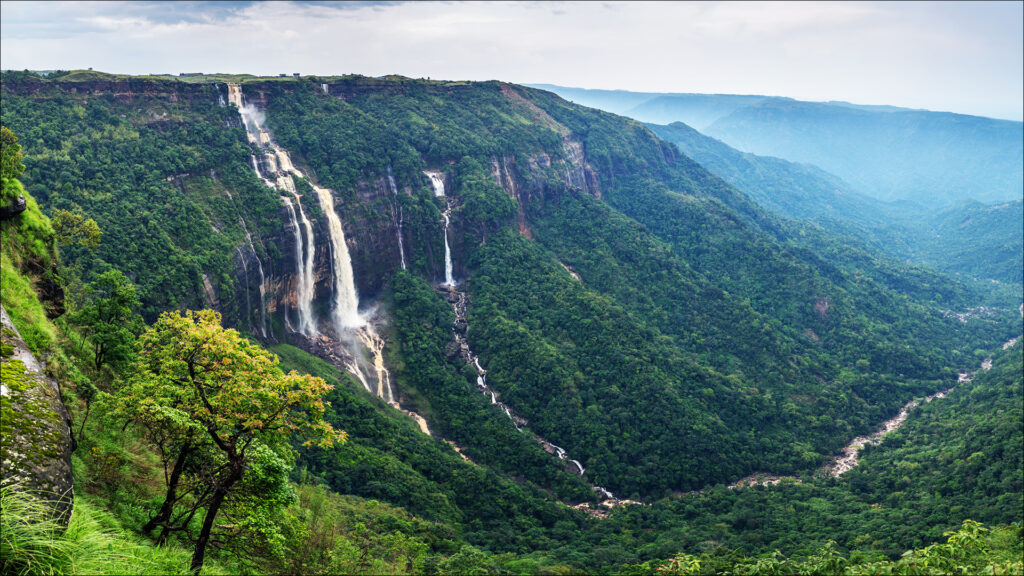
Meghalaya is a stunning gem. Unspoilt and wild, this northeastern Indian state boasts a captivating setting with lush green valleys stretching as far as the eye can see, surrounded by mistshrouded mountains standing tall like guardians watching over their treasure. These are the views I was greeted by on my four-hour drive to Shillong, its capital city, from Guwahati, Assam. I would soon realise this panoramic haven is home to an array of scenic wonders sure to entice the senses. Interestingly, I discovered one of them when I stopped en route at the Umiam Lake or Barapani, as the locals call it. Dotted with small grassy islands, juxtaposed against the backdrop of pine-clad hillocks, this clear-blue reservoir is a popular stop, drawing visitors to its shores for tranquil picnics and a variety of water sports. As for me, I was content to click some beautiful photographs… the first of many in this gorgeous part of the country.
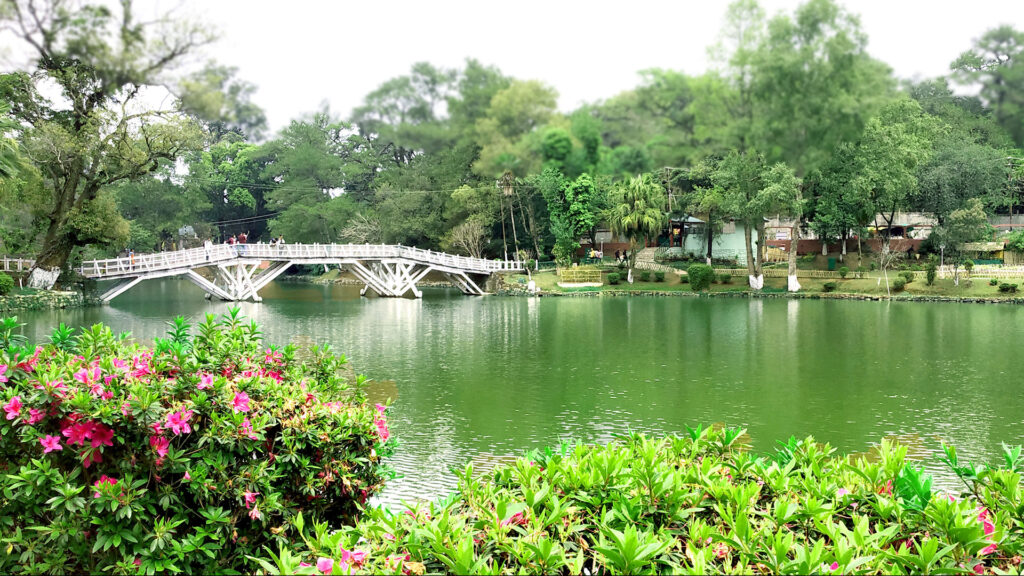
The Heart of Meghalaya
As I reached Shillong, nestled in the lap of the East Khasi Hills at 4,900 feet above sea level, I was enveloped by a cool breeze carrying the fragrance of pine trees, a prelude to the adventure that awaited me in this enchanting land, also known as the ‘Scotland of the East’. Setting out to explore the city on foot, I found myself mesmerised by its colonial charm. Once the summer capital of the British, its majestic buildings boasting ornate façades, elegant arches, and intricate detailing are testament to a bygone era. At the same time, the city pulsates with the vibrant energy of the ethnic Khasi people who call this region home— it’s a harmonious coexistence of two worlds, where the past intertwines seamlessly with the present.
Tempted to learn more about the cultural fabric of Meghalaya, I opted to spend an afternoon at the Don Bosco Museum—a seven-storey centre highlighting the history of this region. Its innumerable artefacts spoke of ancient rituals, traditional costumes, musical crafts, and the unique ways of life of the indigenous communities. It was a sensory excursion that deepened my appreciation of the area’s diversity.
It also made me eager to buy some souvenirs. So naturally, I made my way to Police Bazar, the city’s main market, packed with restaurants and stores; the latter offering a selection of handicrafts, handwoven textiles, and intricate artwork. The delicate Khasi bamboo baskets and carved wooden artefacts caught my eye and I picked them up gladly. The shopping spree left me with a satisfied heart and a rumbling stomach. Led by the aroma of local delicacies from the many bustling food stalls dotting the bazaar, I savoured a bowl of tungrymbai (fermented soybeans) and sakin gata (white rice cake steamed in banana leaves). The explosion of flavours on my palate were a feast for the senses.
As the evening drew near, I headed to Ward’s Lake, a century-old artificial water body in the heart of the city. A graceful ornamental bridge spanning the crystal-clear waters, invited me to explore further. And I did so by opting for a leisurely pedal boat ride, gliding across the lake’s mirror-like surface, marvelling at the breathtaking reflections of the surrounding verdant gardens alive with colourful flowers. Cobblestone walkways and perfectly positioned benches around the banks provide vantage points to admire the lovely scenery. It was a perfect place to unwind and reflect on my day.
Nature’s Living Canvas
Early next morning, I set off to visit the state’s most famous town and one of the wettest places on Earth—Cherrapunji, also known as Sohra in the local Khasi language. This magical land hosts some of the most thrilling attractions I have ever seen. Among these are the Elephant Falls, known as Ka Kshaid Lai Pateng Khohsiew in Khasi, which translates to ‘the three-step waterfall’. The gushing waters of this natural creation descend in three stages into a deep pool, framed by dense foliage. A mesmerising spectacle! Feeling invigorated, I continued my expedition. My next halt was the much-visited Mawkdok-Dympep Valley View Point. Standing there, I was enthralled by the sweeping beauty before me— undulating hills draped in a carpet of luxurious greenery. A true testament to the scenic wonders of Meghalaya.
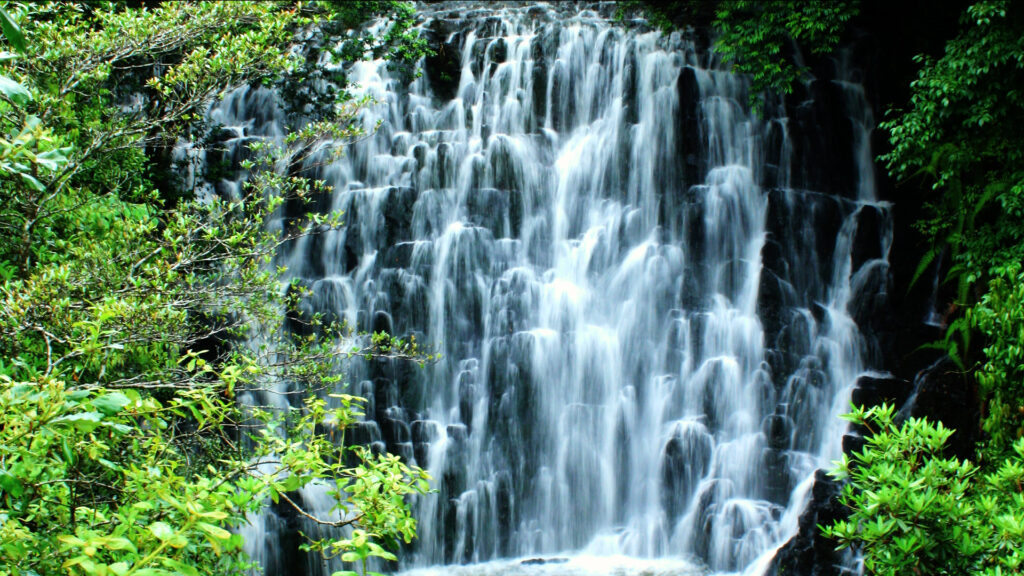
Further ahead lay the spellbinding Nohkalikai Falls. Plunging dramatically from a staggering height of 1,115 feet, the water cascaded in a single stream, rebounding off the rocks below. Well-crafted cement stairs led meto the viewing platform where I immersed myself in the sheer magnificence of the falls. It was an overwhelmingly powerful vision. But there was yet more to come! My onward journey took me the Nohsngithiang Falls, also known as the Seven Sister Waterfalls. As I approached, the sound of the cascading waters grew louder. And then, there it was—a glorious vista of seven distinct streams of water, tumbling down from a height of 1,033 feet over the top of limestone cliffs. Indescribable!
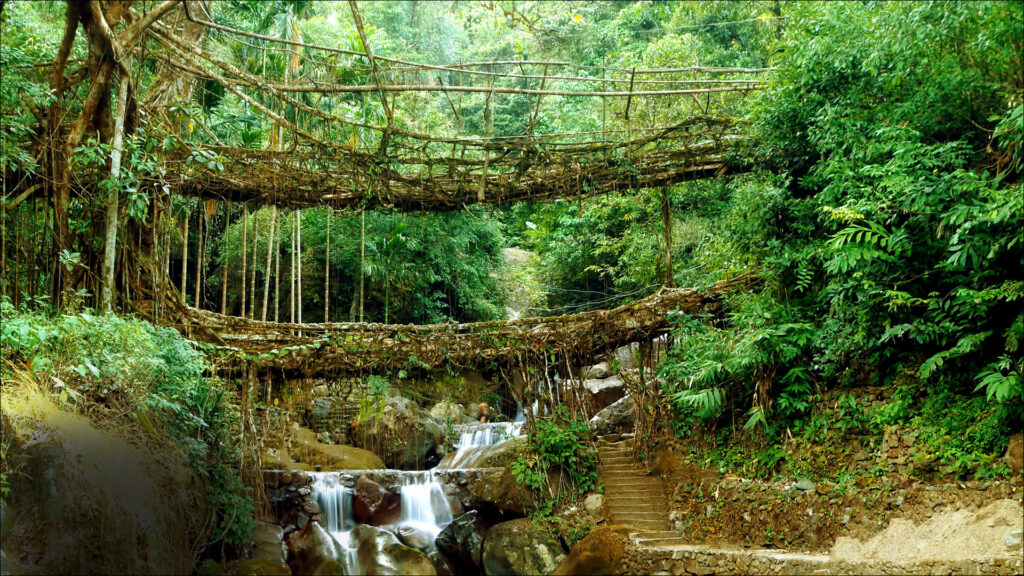
Green Miracles
The following day, the sun was up in all its glory, a cue for me to embark on a hike to witness one of the most spectacular creations of humans and nature—the living root bridges. Crafted by the Khasi tribe, these remarkable structures stand proud, in defiance of all conventions projected by modern bridges made of steel and wires. Formed by guiding the sturdy roots of rubber trees around betel tree trunks, these natural bridges grow steadily over centuries, increasing in strength, till eventually they stretch across rivers as a truly unique phenomenon. The most famous one here is the Umshiang Double-Decker Root Bridge in Nongriat village. After a trek through the dense tropical forest of Tyrna village, about a 25-minute drive from Cherrapunji, and a challenging descent over 3,500 steps, I reached this marvel of engineering, suspended 2,400 feet above the Umshiang River. As I gingerly traversed this 67-feet-long bridge, I could feel the raw power of nature beneath my feet!
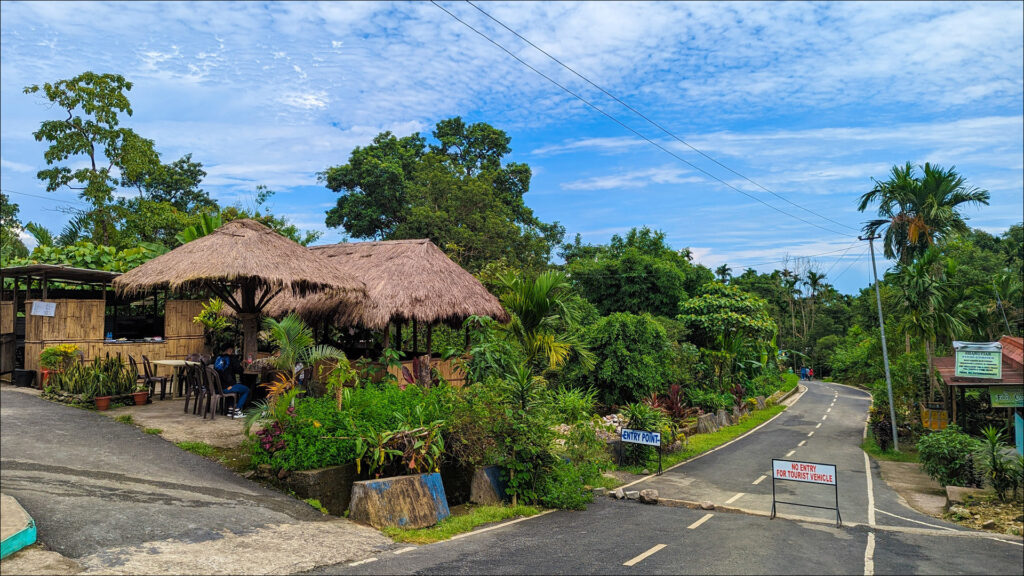
India’s Cleanest Corner
On my way back, friendly locals directed me towards another unique attraction here. I knew what they were referring to when, about a kilometre ahead, I saw a signboard saying: ‘Welcome to Mawlynnong, Asia’s Cleanest Village’. Intrigued, I entered and was embraced by an atmosphere of pristine orderliness. Strolling along the immaculate streets, I marvelled at the sight of quaint little houses, with brightly coloured roofs and doors. Pretty flower pots and meticulously maintained gardens added to the picturesque ambiance around me. The simplicity and commitment to sustainability embraced by the villagers left an indelible impression on me.
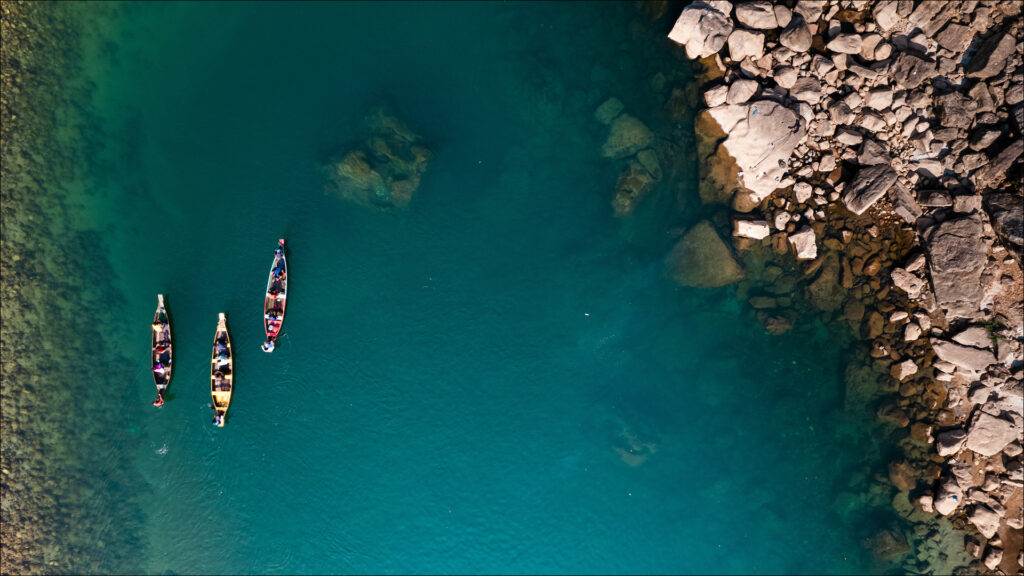
A Memorable Boat Ride
Leaving behind the idyllic allure of Mawlynnong, I set out towards the small town of Dawki, nestled along the Indo-Bangladesh border, about 30 kilometers away. Its crown jewel is the Umngot River, one of the cleanest in India. With a desire to experience its pristine beauty, I stepped onto a boat and as it gently glided away from the shore, the crystalline waters revealed a spectrum of beautiful hues, ranging from vivid turquoise to serene emerald. Entranced, I could see the pebbles resting on the riverbed, fish darting between aquatic plants, and even my own reflection. The river gracefully shaped its course through a dramatic landscape of towering cliffs plush with foliage. As the sun set, bathing the river in a radiant golden glow, I knew my time in Meghalaya was coming to an end. I bid farewell reluctantly, promising to carry its magic within me forever.




